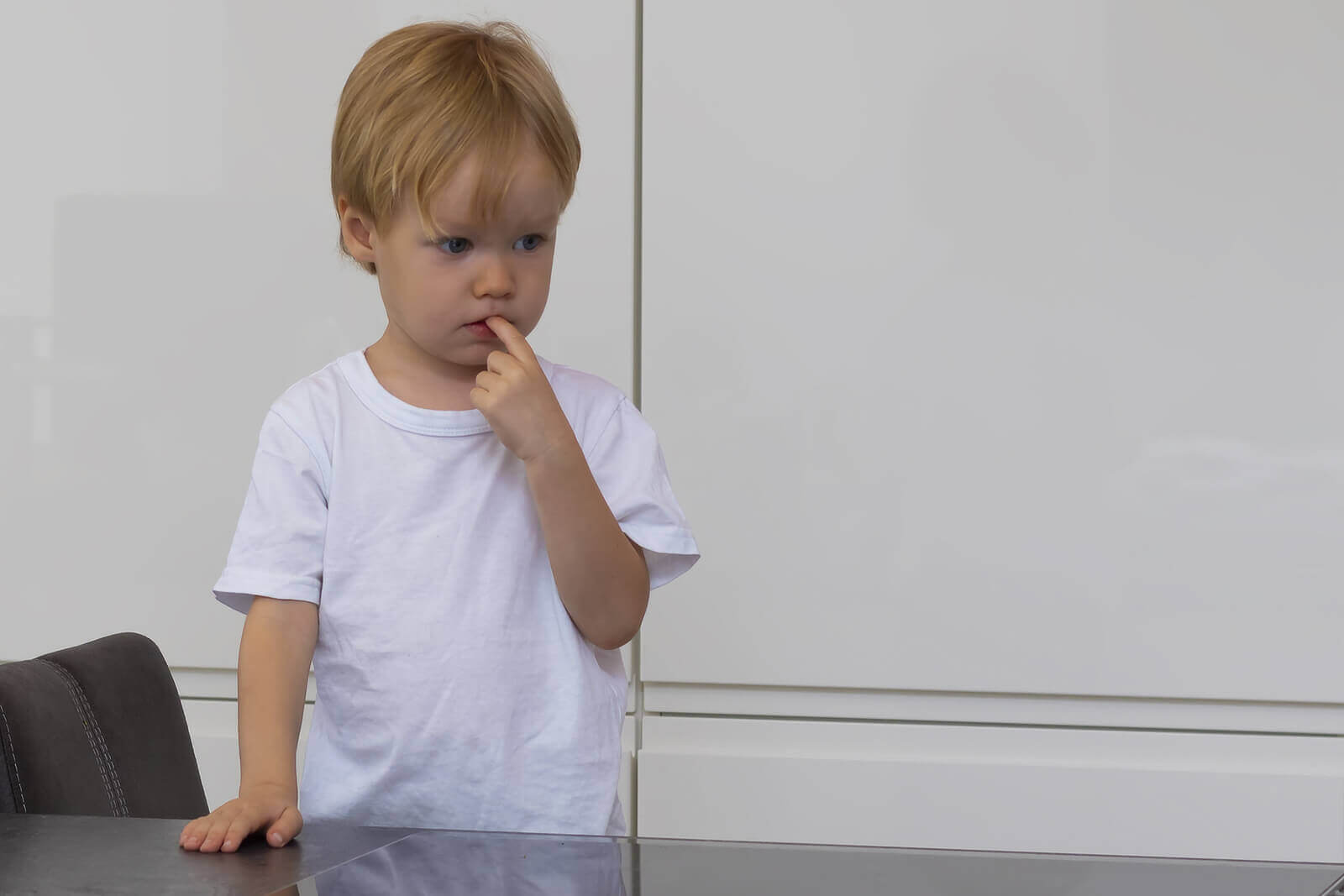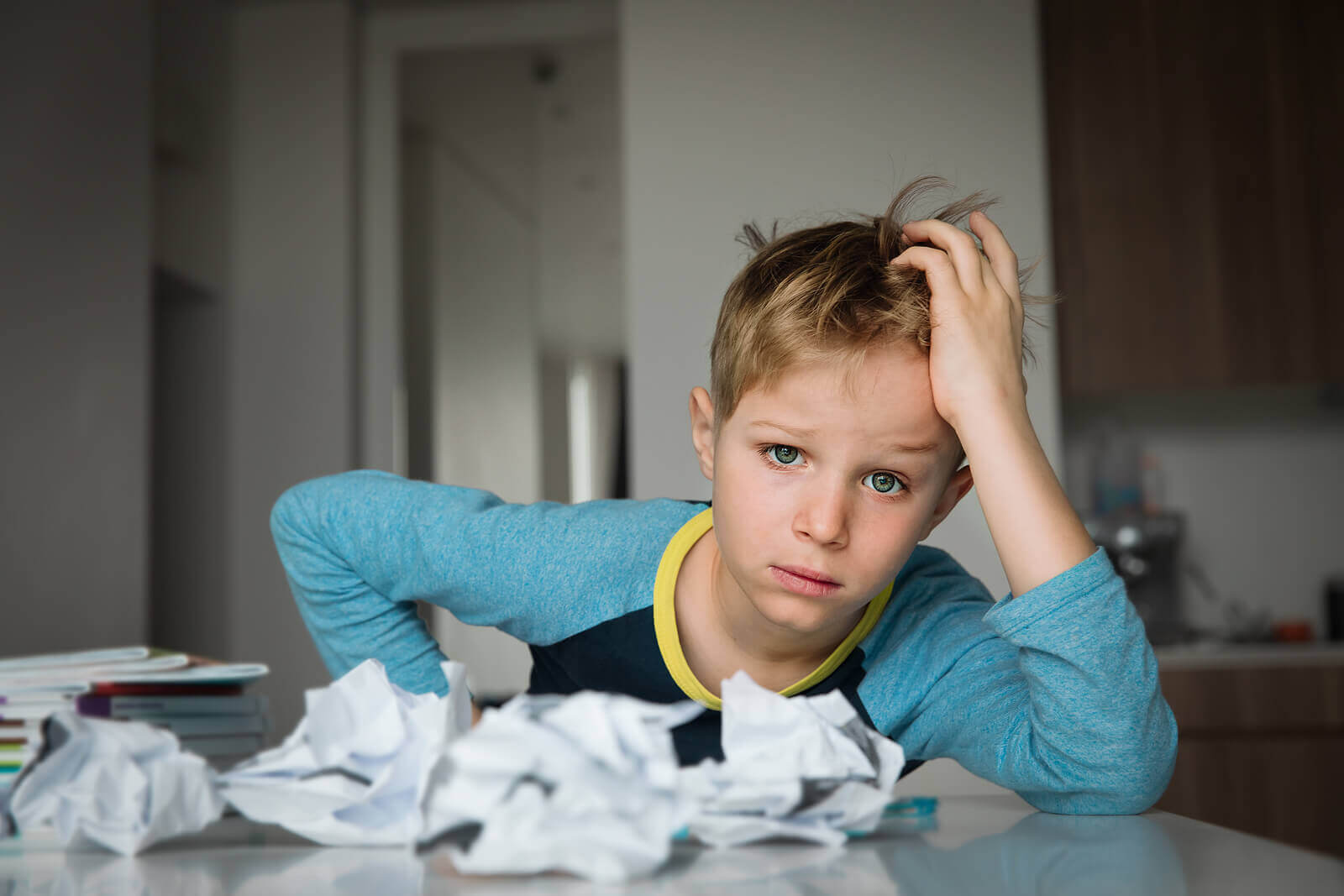Children's Anxiety Symptoms that You Shouldn't Overlook

Certain psychological difficulties that children experience during childhood are more evident and noticeable than others. For example, when they have behavioral problems. However, anxiety symptoms might be more subjective, thus adults may find it more difficult to notice them.
Since children can’t always express their emotions clearly, it’s important to be aware of the different anxiety symptoms we might not notice.
Many times, we overlook certain behaviors, saying that they’re part of a phase or just “kids’ stuff.”
When in fact, the way we think and the emotions we feel during childhood become part of ourselves in the future. This is why we have to make sure those feelings are positive and favorable. Because, they end up shaping our adult personalities.
Children who have anxiety symptoms during childhood will probably have anxiety issues in the future. This will definitely happen if we don’t teach them how to redirect these thoughts and emotions. Therefore, we should be aware and do something when we first notice these symptoms.
Children’s anxiety symptoms

Somatic symptoms
Somatic symptoms are easier to identify because children express their feelings clearly when they’re in physical pain. This type of symptoms are physiological manifestations of problems that actually happen in their minds. They could be headaches, stomachaches, muscle tension or any other pain that doesn’t have a medical explanation.
It’s important to bear in mind that children haven’t fully developed their emotional intelligence. Therefore, they find it hard to identify and handle their own emotions. In the absence of resources to deal with their own feelings, they end up having physical symptoms.
Then, your children may suffer from strong headaches before going to school and vomit before exams or sports competitions. Pay attention to that. They probably need your help to overcome these overwhelming anxiety problems.
Perfectionism
Perfectionism in children is another anxiety symptom. This usually happens when children are too hard on themselves and too strict with everything they do. Hence, they don’t allow themselves to fail, and they’re never satisfied with their results. Mistakes are catastrophic, and they become really upset when they make a mistake. This is a clear example of anxiety levels that need to be handled.
These symptoms may appear during school assignments or even when they’re playing a game. You should check if they find it hard to tolerate frustration when something goes wrong. And, pay attention to how they respond to criticisms or achievements.
Another characteristic of these children is that they’re constantly looking for other people’s approval. Plus, they’re quite sensitive when it comes to other people’s opinions.
If they fail, it affects their self esteem, and no achievement is good enough. Furthermore, they avoid taking risks and always choose activities they’re familiar with, because, otherwise, they may not be up to the task.
Excessive worry
Finally, the most common anxiety symptom is excessive worry. These children may feel excessively preoccupied in situations that other kids find irrelevant or even positive.

For example, they may be worried about a school trip or a sleepover. So, these activities that should excite them, actually make them feel anxious. Maybe, these symptoms hide separation anxiety, social phobia, low self esteem, and other disorders worth noticing.
What to do when noticing anxiety symptoms
In conclusion, if you notice any of these symptoms, don’t overlook them. Different dysfunctional thoughts or beliefs result in anxiety issues, and you should help your children modify them. You could also teach them emotion regulation activities, such as relaxing and meditating.
Finally, if you think it’s necessary, ask for professional help. Remember that certain habits during childhood become part of their adult life. So, don’t let that happen with their anxiety symptoms, and give them the necessary resources to fight them.
Certain psychological difficulties that children experience during childhood are more evident and noticeable than others. For example, when they have behavioral problems. However, anxiety symptoms might be more subjective, thus adults may find it more difficult to notice them.
Since children can’t always express their emotions clearly, it’s important to be aware of the different anxiety symptoms we might not notice.
Many times, we overlook certain behaviors, saying that they’re part of a phase or just “kids’ stuff.”
When in fact, the way we think and the emotions we feel during childhood become part of ourselves in the future. This is why we have to make sure those feelings are positive and favorable. Because, they end up shaping our adult personalities.
Children who have anxiety symptoms during childhood will probably have anxiety issues in the future. This will definitely happen if we don’t teach them how to redirect these thoughts and emotions. Therefore, we should be aware and do something when we first notice these symptoms.
Children’s anxiety symptoms

Somatic symptoms
Somatic symptoms are easier to identify because children express their feelings clearly when they’re in physical pain. This type of symptoms are physiological manifestations of problems that actually happen in their minds. They could be headaches, stomachaches, muscle tension or any other pain that doesn’t have a medical explanation.
It’s important to bear in mind that children haven’t fully developed their emotional intelligence. Therefore, they find it hard to identify and handle their own emotions. In the absence of resources to deal with their own feelings, they end up having physical symptoms.
Then, your children may suffer from strong headaches before going to school and vomit before exams or sports competitions. Pay attention to that. They probably need your help to overcome these overwhelming anxiety problems.
Perfectionism
Perfectionism in children is another anxiety symptom. This usually happens when children are too hard on themselves and too strict with everything they do. Hence, they don’t allow themselves to fail, and they’re never satisfied with their results. Mistakes are catastrophic, and they become really upset when they make a mistake. This is a clear example of anxiety levels that need to be handled.
These symptoms may appear during school assignments or even when they’re playing a game. You should check if they find it hard to tolerate frustration when something goes wrong. And, pay attention to how they respond to criticisms or achievements.
Another characteristic of these children is that they’re constantly looking for other people’s approval. Plus, they’re quite sensitive when it comes to other people’s opinions.
If they fail, it affects their self esteem, and no achievement is good enough. Furthermore, they avoid taking risks and always choose activities they’re familiar with, because, otherwise, they may not be up to the task.
Excessive worry
Finally, the most common anxiety symptom is excessive worry. These children may feel excessively preoccupied in situations that other kids find irrelevant or even positive.

For example, they may be worried about a school trip or a sleepover. So, these activities that should excite them, actually make them feel anxious. Maybe, these symptoms hide separation anxiety, social phobia, low self esteem, and other disorders worth noticing.
What to do when noticing anxiety symptoms
In conclusion, if you notice any of these symptoms, don’t overlook them. Different dysfunctional thoughts or beliefs result in anxiety issues, and you should help your children modify them. You could also teach them emotion regulation activities, such as relaxing and meditating.
Finally, if you think it’s necessary, ask for professional help. Remember that certain habits during childhood become part of their adult life. So, don’t let that happen with their anxiety symptoms, and give them the necessary resources to fight them.
All cited sources were thoroughly reviewed by our team to ensure their quality, reliability, currency, and validity. The bibliography of this article was considered reliable and of academic or scientific accuracy.
- Orgilés, M., Méndez, X., Espada, J. P., Carballo, J. L., & Piqueras, J. A. (2012). Síntomas de trastornos de ansiedad en niños y adolescentes: Diferencias en función de la edad y el sexo en una muestra comunitaria. Revista de psiquiatría y salud mental, 5(2), 115-120. https://www.sciencedirect.com/science/article/abs/pii/S1888989112000237
- Oros, L. (2003). Medición del perfeccionismo infantil: desarrollo y validación de una escala para niños de 8 a 13 años de edad. Revista Iberoamericana de Diagnóstico y Evaluación Psicológica, 16(2), 99-112. https://www.researchgate.net/publication/242230141_Medicion_del_perfeccionismo_infantil_Desarrollo_y_validacion_de_una_escala_para_ninos_de_8_a_13_anos_de_edad_Measuring_the_Childlike_Perfectionism_Development_and_validity_of_a_Scale_for_children_from
This text is provided for informational purposes only and does not replace consultation with a professional. If in doubt, consult your specialist.








